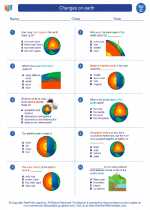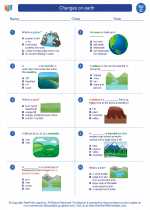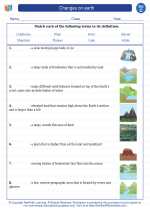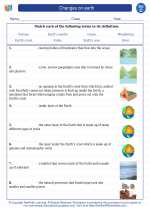Sensory Organs
Sensory organs are specialized body parts that enable organisms to perceive and respond to their environment. These organs detect external stimuli such as light, sound, odor, taste, and touch, and then transmit signals to the brain for processing.
Types of Sensory Organs
There are five main types of sensory organs in humans:
- Eyes (Vision): The eyes contain photoreceptor cells that enable the perception of light and color.
- Ears (Hearing): The ears contain mechanoreceptor cells that detect vibrations in the air and convert them into sound signals for the brain.
- Nose (Smell): The nose contains chemoreceptor cells that detect chemical molecules in the air, allowing for the perception of different odors.
- Tongue (Taste): The tongue contains taste buds with chemoreceptor cells that enable the perception of different tastes such as sweet, sour, salty, and bitter.
- Skin (Touch): The skin contains various types of mechanoreceptor cells that respond to pressure, temperature, and pain, allowing for the perception of touch and temperature.
Functions of Sensory Organs
The sensory organs play a crucial role in helping organisms gather information about their surroundings. They allow for the perception of the outside world and enable the body to respond appropriately to different stimuli, ensuring survival and well-being.
Study Tips
To better understand the topic of sensory organs, consider the following study tips:
- Review the anatomy and physiology of each sensory organ, including the specialized cells and structures involved in detecting and transmitting stimuli.
- Explore the different types of stimuli that each sensory organ can detect, and how these stimuli are processed by the brain.
- Engage in hands-on activities that demonstrate the functions of sensory organs, such as conducting simple experiments to test the senses of sight, hearing, smell, taste, and touch.
- Utilize diagrams and interactive resources to visualize the inner workings of sensory organs and their connections to the nervous system.
- Practice applying your knowledge of sensory organs to real-life scenarios, such as understanding the impact of sensory impairments on daily activities and the development of assistive technologies.
By immersing yourself in the study of sensory organs, you can gain a deeper understanding of how these remarkable body parts enable us to experience and interact with the world around us.
.◂Science Worksheets and Study Guides Third Grade. Changes on earth

 Activity Lesson
Activity Lesson
 Worksheet/Answer key
Worksheet/Answer key
 Worksheet/Answer key
Worksheet/Answer key
 Worksheet/Answer key
Worksheet/Answer key
 Worksheet/Answer key
Worksheet/Answer key
 Vocabulary/Answer key
Vocabulary/Answer key
 Vocabulary/Answer key
Vocabulary/Answer key
 Vocabulary/Answer key
Vocabulary/Answer key
